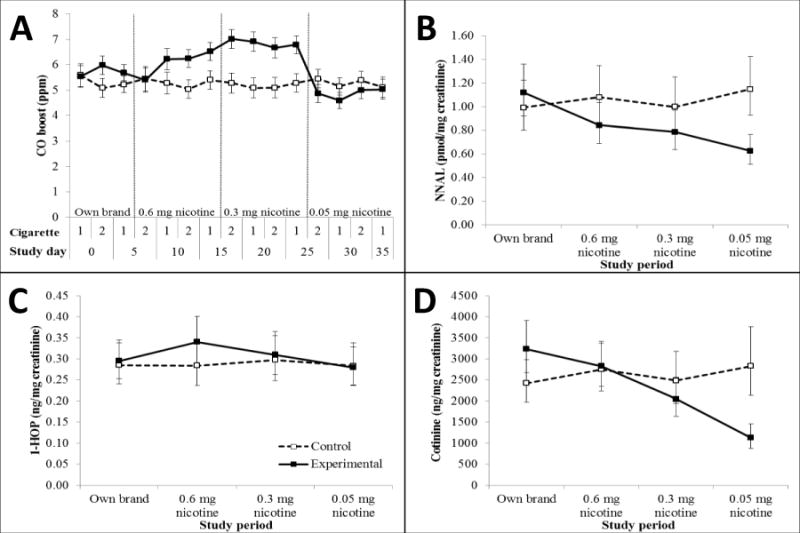Figure 3.

Carbon monoxide (CO) boost following each topography session (A), NNAL (B), 1-HOP (C), and cotinine (D) throughout study in smokers using cigarettes of progressively reduced nicotine content (experimental group) vs. own brand (control group). Data for urinary biomarkers are depicted as geometric means and 95% confidence intervals. Among the experimental group, CO boost was significantly greater during the 0.3 mg nicotine cigarette period compared to all other periods and to controls. CO boost was significantly lower during the 0.05 mg nicotine cigarette period relative to all previous periods. Cotinine and nicotine decreased progressively from baseline with each study period, although decreases from baseline were non-significant during the 0.6 mg nicotine period. NNAL levels were significantly lower than baseline during all subsequent periods, and during the 0.05 mg period compared to the 0.6 and 0.3 mg nicotine periods. Compared to controls, cotinine levels in the experimental group were significantly lower at baseline, and cotinine, nicotine, and NNAL levels were significantly lower during the 0.05 mg period. 1-HOP was similar across study periods and groups.
